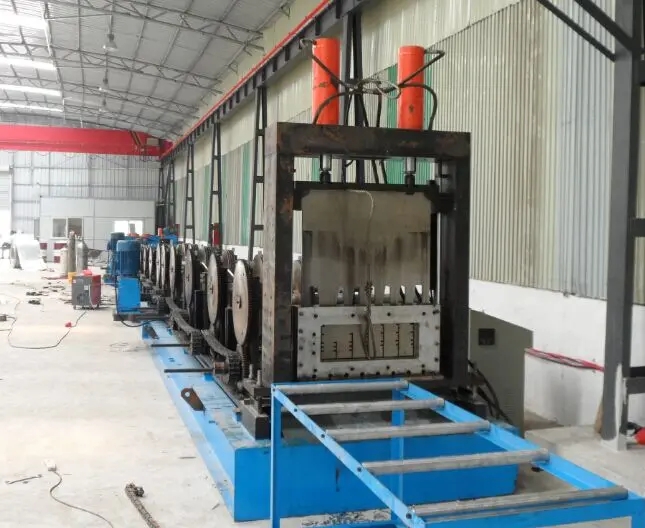
Understanding the Strut Channel Roll Forming Process
In the realm of manufacturing and construction, efficiency and precision are paramount. One innovative method that has gained significant traction in recent years is roll forming, particularly in the production of strut channels. Strut channels, also known as purlins or framing members, are vital components used in various applications, including electrical support systems, HVAC installations, and structural support frameworks. This article explores the intricacies of strut channel roll forming, its benefits, applications, and the overall process.
What is Roll Forming?
Roll forming is a continuous bending operation in which a long strip of metal is shaped into a desired cross-sectional profile by passing it through a series of rollers. Each set of rollers progressively bends the material into the final shape. This method is ideal for producing long lengths of uniform and repetitive cross-section products economically. It is well-suited for materials like steel, aluminum, and other metals, making it a favorite in various industries.
The Strut Channel Roll Forming Process
The strut channel roll forming process begins with initial material preparation, where coils of metal strip—often galvanized steel or aluminum—are unwound and fed into the roll forming machine. The machine is equipped with a series of roller stations that shape the metal strip as it passes through. Each roller is precisely engineered to progressively form the metal into the desired strut channel profile.
The first set of rollers typically flattens the metal strip, eliminating any coil set or curvature. Subsequent rollers then begin to bend the edges of the strip outward and create the characteristic U-shape of the strut channel. The number of rollers and their configuration can vary depending on the specific design requirements of the strut channel being produced.
Benefits of Strut Channel Roll Forming
1. Efficiency Roll forming is highly efficient, enabling the production of long lengths of strut channels at high speeds. This reduces labor costs and manufacturing time compared to traditional methods.

2. Precision The automated nature of the roll forming process ensures consistent dimensions and tolerances, which is crucial for applications where alignment and fit are critical.
3. Material Utilization Roll forming minimizes waste, as it can make use of the entire width of the metal strip. The process generates fewer off-cuts and scrap compared to other forming methods.
4. Versatility Roll forming can produce various profiles, including standard and custom designs. This adaptability allows manufacturers to meet specific project requirements without the need for extensive retooling.
5. Strength and Durability Strut channels formed through this method possess excellent structural integrity. The continuous nature of the process enhances the strength of the final product, making it suitable for heavy-load applications.
Applications of Strut Channels
Strut channels find widespread use in various sectors, including
- Construction Ideal for supporting pipes, ductwork, and electrical conduits. - HVAC Systems Utilized to create frameworks for air conditioning and heating systems. - Retail Displays Employed for creating display racks and shelving units. - Automotive Used in the manufacturing of structural components and equipment mounts.
Conclusion
The strut channel roll forming process offers numerous advantages, making it an excellent choice for manufacturers looking to produce high-quality, consistent, and durable framing solutions. With its efficiency, precision, and versatility, this method plays a crucial role in modern manufacturing, catering to a wide array of industries and applications. As technology continues to advance, the roll forming process will likely evolve, further enhancing its capabilities and effectiveness in meeting the ever-growing demands of the market. Whether for construction, HVAC, or other applications, strut channels produced through roll forming are essential components that streamline installation and ensure structural integrity.